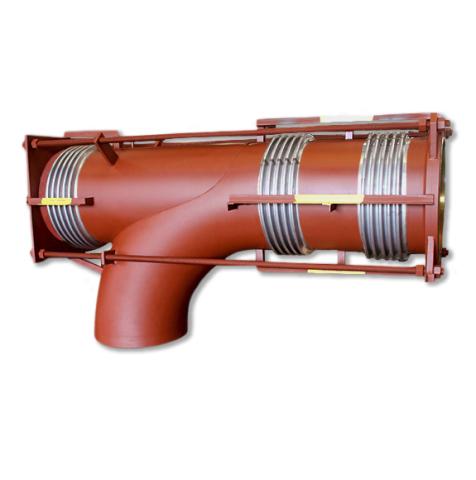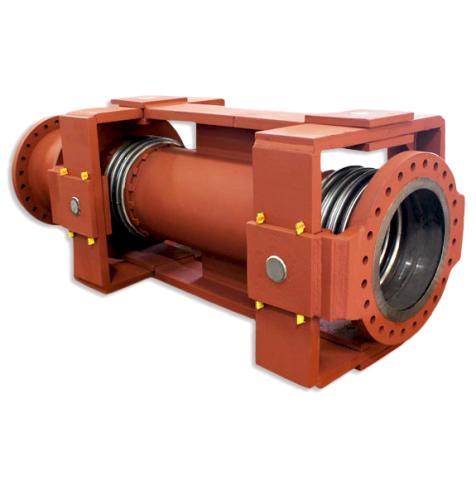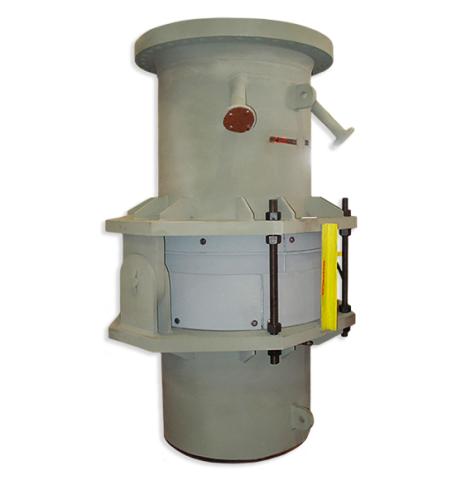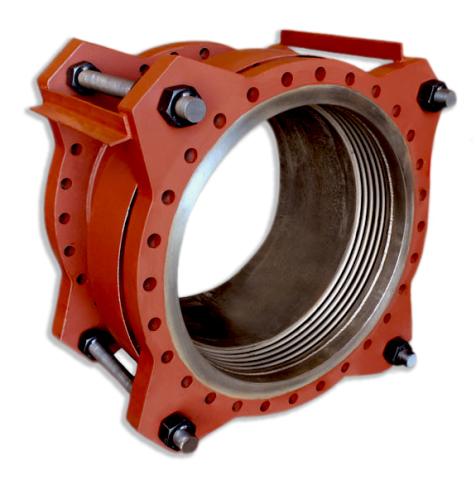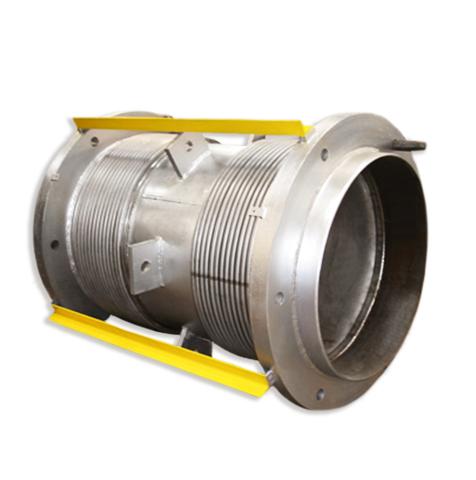Metal Piping
Metal piping expansion joints are critical components in various industrial and engineering applications, designed to absorb thermal expansion, mechanical vibrations, and other movements in metal piping systems. They are engineered to ensure the safe and efficient operation of the systems that transport fluids, gases, or particulates under varying temperatures and pressures.
These expansion joints typically consist of one or more convoluted metal bellows, which are flexible, accordion-like structures capable of absorbing axial (lengthwise), lateral (sideways), and angular movements. In addition to the bellows, metal expansion joints may include additional components such as flanges, tie rods, liners, and covers to ensure proper installation and functionality.
Key features of metal piping expansion joints include durability, flexibility, pressure resistance, temperature tolerance, and corrosion resistance. It has a broad range of applications including power generation, petrochemical industry, pulp and paper industry, marine applications, aerospace, HVAC systems, refining, municipal water systems, desalination plants, and industrial processing.
Metal piping expansion joints offer numerous advantages, such as movement absorption, high pressure and temperature capabilities, corrosion resistance, enhanced safety, versatility, economic efficiency, reduced maintenance and installation costs, improved system efficiency, and prolonged equipment life.
Types of metal expansion joints:
Single Bellows Expansion Joints: Consist of a single set of bellows, they are commonly employed in pipelines where axial movement is prevalent due to temperature changes or pressure variations.
Universal Expansion Joints: Feature two bellows separated by a central pipe section, they are ideal for systems requiring compensation for multi-directional movements and minor misalignments.
Externally Pressurized Expansion Joints: Bellows are externally pressurized by fluid, enhancing stability for significant axial travel. They are used in long pipeline runs to manage substantial thermal expansion without risk of bellows squirm.
Hinged Expansion Joints: Incorporate hinge mechanisms that restrict movement to rotational around the hinge axis. They are suitable for piping systems where controlled angular movement is required, often in pairs to handle thermal bending.
Gimbal Expansion Joints: Utilize gimbal rings that enable rotation around multiple axes, accommodating complex angular displacements. They are effective in systems where multi-plane angular movement is needed, such as complex piping layouts.
Tied Expansion Joints: These joints are equipped with tie rods or bars that constrain axial forces but allow lateral deflection. They are commonly used in systems where lateral movement is necessary, but axial loads must be managed to protect equipment or anchors.
Pressure-Balanced Expansion Joints: Feature an additional set of bellows and tie rods to counteract pressure thrust, ensuring movement without stress on the piping. They are ideal for applications where pressure forces must be counterbalanced to avoid overloading pipe anchors or supports.
In-Line Pressure-Balanced Expansion Joints: Incorporate in-line bellows and tie rods for axial movement absorption, balancing pressure without lateral displacement. They are suitable for systems where axial movement is prevalent, and pressure balance is critical to avoid system strain.
Elbow Pressure-Balanced Expansion Joints: Designed with bellows and tie rods around a 90-degree bend to handle angular movements and pressure forces. They are commonly employed in piping systems with directional changes where pressure thrust must be managed at elbow connections.
Toroidal Expansion Joints: Incorporate a toroidal (donut-shaped) design for compact yet effective movement accommodation. They are used in systems with spatial constraints where significant flexibility is required in a small footprint.
Inline Bellows Assemblies: Consists of bellows integrated into a straight pipeline section. They are ideal for pipelines with straight runs experiencing thermal fluctuations.
Lateral Pressure-Balanced Expansion Joints: Include laterally arranged bellows with a pressure-balancing mechanism. They are suitable for systems where lateral movement needs to be absorbed without pressure-induced stress on supports.

